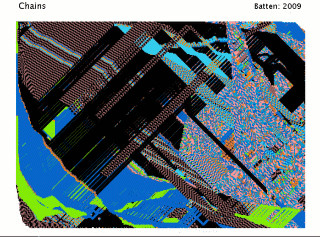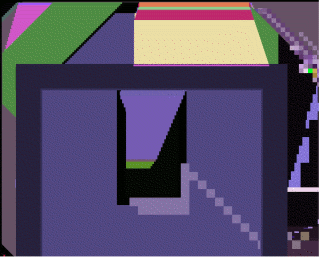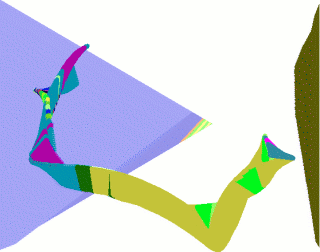This Java "Gallery" presents work organised in conceptual categories (and has a somewhat arbitrary historical development).
PROJECT KLEE tries to explore and develop the underlying concepts and the relationships between them in a more systematic way..
---------------------------------------------------------
click on relevant image to link to notes and Java programmes
---------------------------------------------------------
Procedural Sketches:
Composite Studies:



General Remarks:
Please note that these are all Works In Progress -and liable to further modification -which shouldn't prevent anybody from remarking on any bugs or other problems, etc.... if they so wish..... :)
The first two works can be modified via the menu -by giving a right-mouse click (although the "Weaver" menu seems a little lazy on my machine -sometimes clicking on apparently empty space (where the menu should be) will "wake up" the component! :))). Hopefully, better programming technique will soon improve performance.
The third work doesn't currently have a menu.
All these works fall into the category of "slow computing" -and are considered to be a form of "visual wallpaper" with an infinite duration. Despite the presence (in some cases) of a menu -these are not "interactive" works. The menu is primarily intended to "configure" a work -after which the process is supposed to be completely autonomous.
I'm still hoping, some time in the (near) future to add sound to the works.....
For those who have problems with their browsers not running the applets: I have been told that Netscape 7.1 works fine. However, one will (also) need an active java plug-in Version 1.4.1 or higher.
The Creative Context:
These works are possibly conceptually much more complex than the visual complexity might suggest.
They are operating as practical experiments on a variety of levels. One of these levels is the nature of the process of developing language in general -including the process of programming a computer through some form of linguistic system. In this context, it is significant to note that I refer to a linguistic process and not simply to a process of "coding". I do not believe the two concepts should be confused. A "code" implies a reversible process between coding and decoding -and I do not believe that "language" allows itself to be "decoded" -simply because that which is expressed by language is also "created" by the language itself -and so cannot be "decoded" to an "original" form -as if it was external to language.
So one (another?) of the phenomena explored by these works (although probably invisible to the viewer) is the relationship between "form" and "content". Within my conceptual world this relates to the relationship between "epistemology" and "ontology" -in this context, the way the programme is written and the way it behaves (or is experienced by the observer). Presumably, the programme and the interpretation of the programme by the computer represent a mapping between epistemology and ontology.
Despite possible appearances, these works are (after a random initialization) completely deterministic. The data used to control the processes involved are all generated by the processes themselves -so the works also explore the long term behaviour of "chaotic" (but NOT random!) systems -based on intensive and continuous feedback. Despite what the dictionary says about "determinism" -chaotic systems are deterministic but not completely predictable.
The works described here also involve the interaction of different representations of the data present -so they can also be seen as models for "ecological" systems and perhaps even as social models.
The mapping of "information/data" into different contexts -and the retrieval of data from these contexts is also an important underlying theme -as are related concepts regarding the nature (and potential role) of conceptual space in the creative process -and fundamental concepts regarding the nature of computation.
Basically, the works are seen as "Goedelian interpretations of Einstinian Time/Space machines. In this context, a Turing machine is seen as a one-dimensional Time/Space machine.
These themes are explored further in the texts and on the original site.
Although these works are generally "concept driven" -they are also subject to ad hoc improvisation during development (the prerogative of the artist/programmer). The development cycle basically involves repeatedly modifying previous "prototypes" -so they are perhaps a bizarre (and personal) mixture of logic and intuitive improvisation.
Hopefully, the works also have some aesthetic value......
Introductory Statement regarding "Lost in Cyberspace: A New Perspective?"
Some Personal Remarks on the Creative Potential of Space